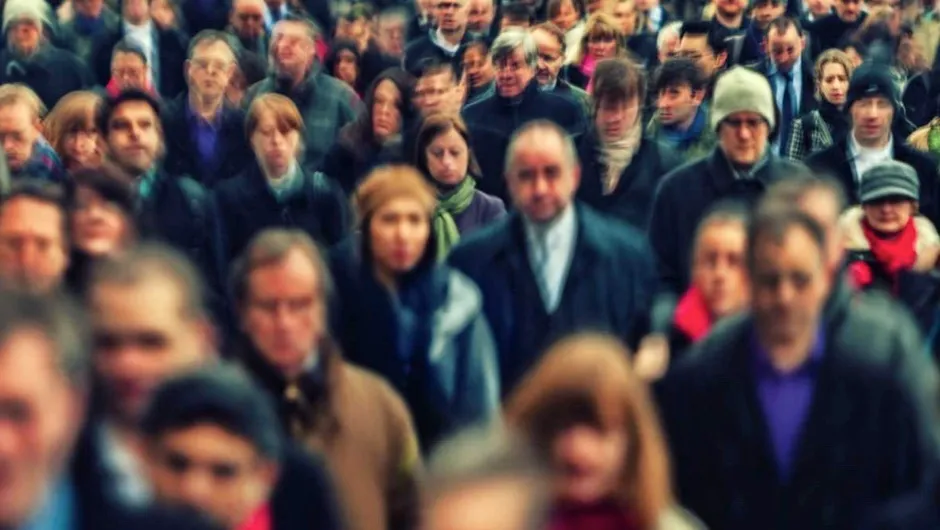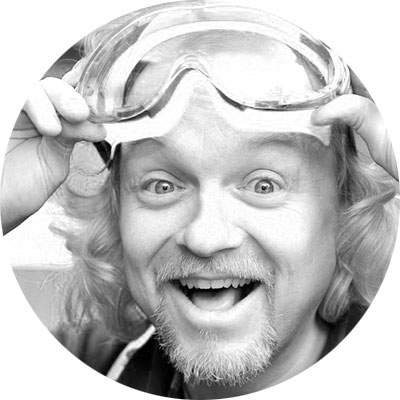For my new book, I decided I wanted to tackle some science that was a bit more personal, notably the science of being a member of the Homo sapiens species. I could have gone for low hanging fruit but decided to root around in the basements of science and try to shine a light onto some of the more eclectic and obscure bits of our scientific heritage. Here are a few examples from The Science of Being Human.
Three-volution
If you head east into Russia and keep going until you are nearly in Mongolia you get to the Denisova cave. It’s not much of a cave, a couple of largish spaces in the side of a hillside. But inside that cave were found some of the most important hominid remains.
Palaeontologists uncovered not just human remains, but also the remains of Neanderthals and a few tiny fragments of a third, previously unknown species now referred to as Denisovans.
Read more about our ancient ancestors:
- Ancient Neanderthal-Denisovan hybrid unearthed in Siberian cave
- Recreating the Neanderthal brain
- Why Neanderthals aren't the brutish, primitive species we once thought
What really blew the minds of the scientists was that all three species appear to have been living together in this cave. Together - at the same time - presumably as a community. On top of that when they analysed the genetics of one of the tiny handful of Denisovan remains they realised that the young female it came from had a Neanderthal mother and Denisovan father.
Pause for a moment - consider what this means. In this cave, a group of hominids were living and interbreeding with each other. It turns out, if you analyse Neanderthal, human and Denisovan genetics we have had a long, long history of such interbreeding.
We are all part Neanderthal and part Denisovan and for most of the history of the human species, we lived together with other intelligent hominids. In evolutionary terms, it is only the blink of the eye that we have been the only sapient species on the planet.
Muscle memory
Our evolutionary past crops up in the strangest places, like in our muscles. It is a quirk of the way our muscles work that gives rise to delayed onset muscles soreness or DOMS for short. This is the pain you feel 24 to 48 hours after doing exercise.
It is caused by overexertion of the muscle tissue that causes microscopic tears. These don’t themselves stop you using the muscle, but the repair process can. The damage done sets off a chain reaction that leads to the activation of your immune system.

Effectively a cleanup crew of white blood cells are sent into the damaged muscle and this, in turn, causes the muscle to become slightly inflamed and swollen. This swelling leads to a shortening of the muscle and that is the pain you feel with DOMS. The delayed part is because it takes a little while, about a day, for the process to get fully underway.
The great thing is that once you have inflicted and then suffered from DOMS, the muscle is protected from further damage as your it has now been elongated by the healing process.
Read more about exercise:
- HIIT is changing the way we work out, here's the science why it works
- How to push the limits of human endurance – Alex Hutchinson
- What happens to my body when I exercise?
Human lie detectors
Life as a human being is not all about muscles and our deep evolutionary past. Much of being human today is about how we interact with each other both face to face and on-line.
Knowing how to deal with other members of our species is a constant challenge for us all. How good, for example, are you at spotting a lie, or telling lies for that matter? Chances are you think you are poor at lying but have a bit of a knack for spotting them.
Sadly, and sorry to have to disabuse you of this notion, but you are almost certainly no good at spotting a lie. In fact, almost everyone is worse at spotting lies than random chance. You are statistically better off flipping a coin to determine if somebody is telling the truth or lying.
Read more about lies and lying:
- Five ways to get anyone to tell you the truth (plus find out who the most likely liars are)
- The Myth Gap: how to navigate a world of ‘post-truth’ politics
- If a long history of unconscious bias can teach us anything, it's that faulty thinking can be fatal
So what’s the knack? Well, there isn’t one. Truth detection schemes have all proven to be basically useless, and that includes lie-detector machines. Looking out for eye contact, sweaty skin or increase of pulse have all proven to show no correlation with lying.
The only thing that has proven to be a little bit effective is to try and get the person you are questioning to slip up in their story. If you are telling a lie it is more mental effort than telling the truth, you need to invent story details, keep them straight in your head and consistent.
If you can make the potential liar do more mental work as they potentially lie, they are more likely to get their story tangled and slip up. The standard technique is to ask the person you are interrogating to tell their story in reverse chronological order. It is a harder mental task and if the person is lying they are thus more likely to get their story wrong.
I use the word interrogate advisedly as this technique only really works in that situation. Sadly, it is of little use when trying to find out who ate the last biscuits and probably unethical when used with kids.
Fluid behaviour
The ultimate example of humans interacting come when you get a bunch of us together and make a crowd, which doesn’t behave the way you may think.
When you start to consider crowd behaviour it makes intuitive sense to see a load of people as particles in a fluid flowing through corridors and doorways. As is so often with science, especially when you get messy biological specimens involved, the truth turns out to be much more complicated and not what you thought.
Discover more about crowd science:
- “It’s noisy and crowded, with a rudimentary sewage system, yet people talk about serenity”
- Why do people behave differently in a crowd?
- Human overpopulation: can having fewer children really make a difference?
Crowds of humans do not act like fluids. Specifically, you need to throw out all the mathematical equations for fluid dynamics. They don’t apply.
The simplest example is what happens when a crowd of people flow through a corridor. The equivalent for a liquid would be water flowing in a pipe. In this case, there is a thing called the Hagen-Poiseuille law that defines the speed of flow in various parts of the pipe. The bottom line is that the closer to the wall the liquid is the slower it flows. The fastest flow will be down the very middle of the pipe.

Human beings have no respect for the laws of physics and break the Hagen-Poiseuille law. If you film a crowd of people moving through a corridor, the speed of the crowd is the fastest near the walls.
It turns out that for fluids in pipes the friction with the wall slows it down, but people don’t suffer from this. Instead, humans are so worried about bumping into each other than those at the side of the corridor can go fastest because they only have to worry about people on one side, the other side being an inanimate corridor wall.
Read more from resident science reporter on BBC One’s The One Show, Marty Jopson:
- Breakfast: 5 ways science makes the best meal of the day even better
- How do your household gadgets actually work?
Being human is exquisitely complex and convoluted. The science that underpins the way we have evolved, the way we behave and the way we interact with each other has its roots in every field of science. From the maths of queuing to the biochemistry of death, I had fun digging out some less known research for my book on the science of being human.
The Science of Being Human by Marty Jopson is available now (£12.99, Michael O'Mara)
